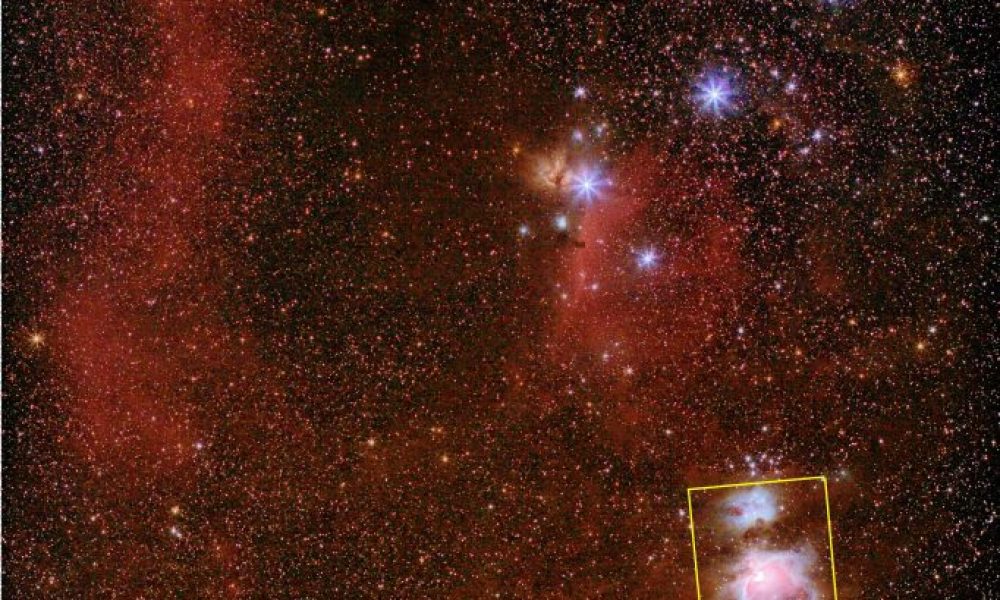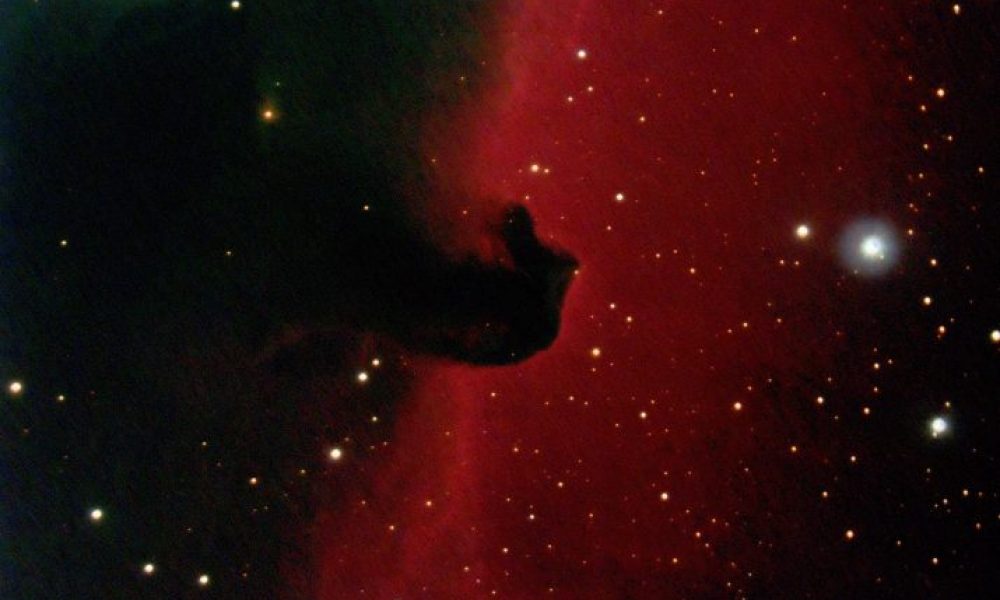Two Gems from the Two Bears
Dear Observers,
If you were to go outside tonight at 10 PM, face north, and look between half way and high up in the sky, and if it were clear, and if you live where the sky is really dark at night, you would see something a lot like the first image. The brightest star near the bottom of the image is Polaris, the North Star. In the real sky it is about half way up, and high above it stands the Big Dipper, upside down. In Great Britain this star grouping is know as the Plow, and it is probably the star grouping most recognized by people living in the Northern Hemisphere. In the first image it is at the top, and in case you might have trouble picking it out from all those other white specks, I have outlined it with faint green lines There are also lines coming off from the North Star showing the much fainter stars of the Little Dipper. If you live in or near a city where the skies are not dark, you can still see the North Star and the stars of the Big Dipper, but you might not see any other stars in that direction, because the rest are all pretty faint.
The Big and Little Dippers are not constellations, but only part of a larger grouping of stars that make up the constellations of Ursa Major (the Great Bear) and Ursa Minor (the Little Bear), respectively. The people who saw bears in the larger groupings of stars had really good imaginations, and I won’t even try to show you how they saw bears! But included within the boundary of the constellation of the Great Bear, somewhat toward the Little Bear, are two beautiful galaxies located within the small rectangle at the left side of the image. If you have a dark sky and a good pair of binoculars, you could see two tiny fuzzy patches within that rectangle. Otherwise you can just look at the second image, which is magnified 23 times over the first image. This second image was taken with a 5-inch diameter lens that has a focal length 46 times as long as the the lens used to take the first (wide angle) image. (I already enlarged the first image 2 times and cropped it, so that’s why the second image is only 23 times larger rather than 46 times larger.) These two very different looking galaxies – less than one degree apart – are not just in our line of sight, making them appear close together; they actually are near each other in space, and they interact gravitationally. I have drawn a rectangle around each galaxy showing the outline of the next two individual images, which are at a scale 5 times greater than image 2.
The top one (image 3) is M81 or Bode’s Galaxy. It is the largest of a 30-some group of galaxies known as the M81 Group, They are some of the closest galaxies to our own Milky Way Galaxy outside of our Local Group of 50-some galaxies that lie within 5 million light years of us. M81, at a distance of about 12 million light years, is a beautiful example of a spiral galaxy, just a bit smaller than our own galaxy. The pinkish dots are areas of hydrogen gas where new stars are forming within the bluish spiral arms, which consist mostly of young, hot blue stars. Older stars tend to be situated in the central core region, and in the very center sits a large (invisible) black hole.
The fourth and final image is M82 or the Cigar Galaxy. At less than half the size of M81, it is physically located at a distance from M81 only about 3 times the diameter of M81. This puts it close enough to be greatly affected by M81’s tidal gravitational forces. This has caused M82 to become a so-called starburst galaxy, one where massive amounts of energy leads to new star formation. In the center portion of this galaxy with massive amounts of red-glowing hydrogen gas, star formation is occurring 10 times faster than in our entire Milky Way galaxy. M82 used to be classified as an irregular galaxy, but recent professional images in the near infrared have found a nearly edge-on spiral structure, obscured in the visual wavelengths by large amounts of dust. This image of M82 was taken not under the dark skies of Lookout, but under the light-polluted skies of Albany. Because of this it required a special filter and an accumulation of more than 8 hours of exposure. A supernova that occurred 3 years ago in M82 was described in a February 27, 2014, Lookout Observatory email.
Keep looking up,
Carter Mehl,
(Sometime) Resident Astronomer,
Lookout Observatory









